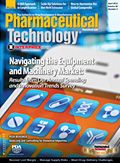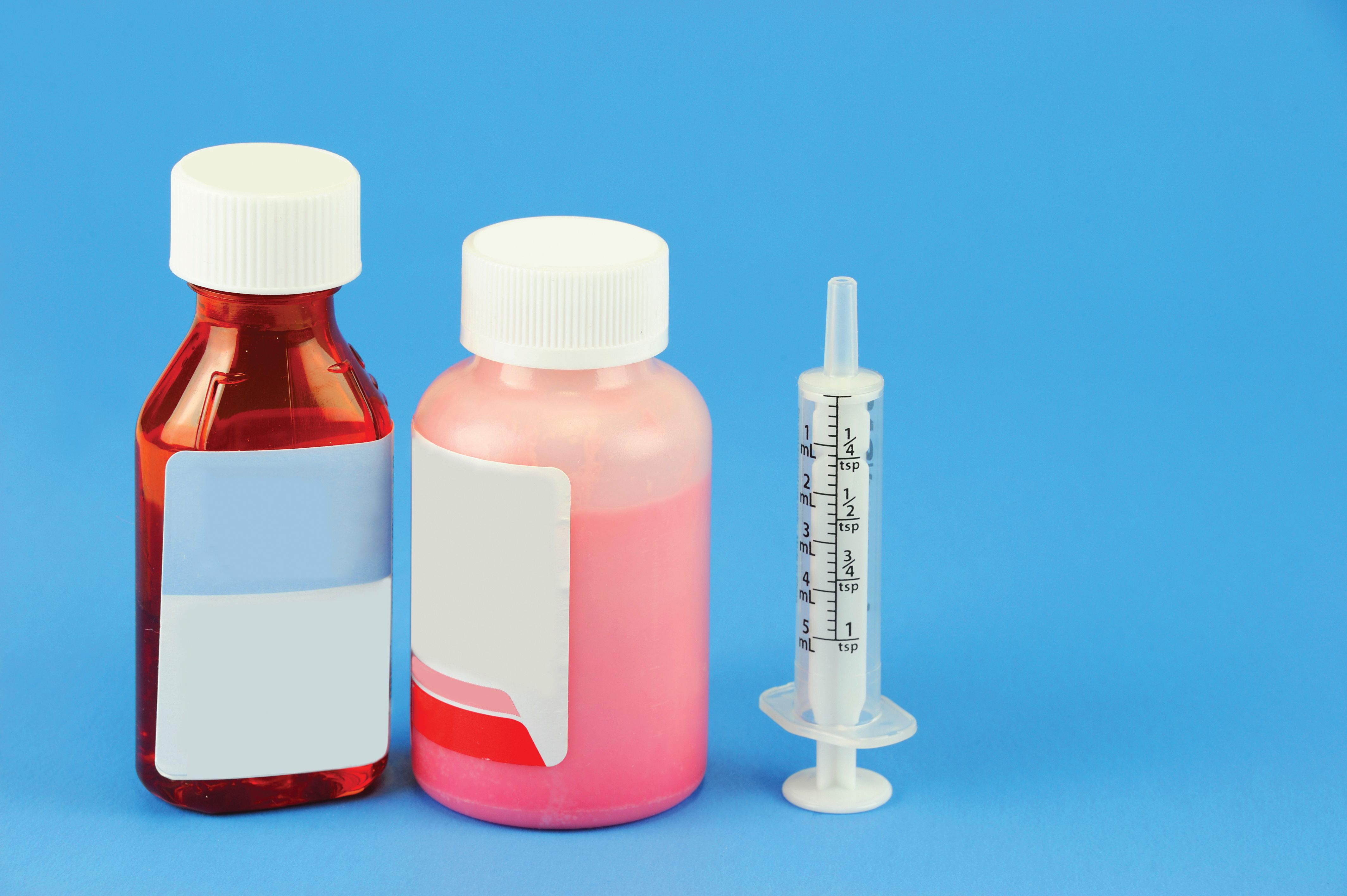News
Article
Pharmaceutical Technology
Freeze-Drying: Is Technology Advancing Fast Enough?
Author(s):
Experts discuss the best practices for developing a QbD-based lyophilization process.
QBD APPROACHES
PharmTech: What types of unique approaches and product knowledge are required when using a QbD approach for lyophilization?
Gieseler (University of Erlangen-Nuremberg): We need to find a more profound translation for experiments conducted in different scales of equipment. Successful freeze drying requires a sound understanding of both product and process related attributes, as well as the corresponding analytical tools used during product and process development to representatively measure them. When we look at the desired final quality characteristics of a freeze-dried product, the term 'quality' is, in the first instance, unrelated to the stability of an API, but targets other characteristics, such as cake elegancy, reconstitution time, moisture content and other parameters. A vial with a collapsed cake is routinely rejected from the batch during optical inspection, even though API stability may be perfectly acceptable from a pharmaceutical point of view. Optical inspection is one of the first tests to be performed on a freeze-dried product, not API stability.

(IMAGE: DIAMOND SKY IMAGES/DIGITAL VISION/GETTY IMAGES)
The connecting link between 'quality attributes' and 'product/process attributes' is often grounded in the physicochemical behavior of the formulation, which is a function of temperature and time. Physicochemical properties, such as the critical formulation temperature (the glass transition temperature of the freeze concentrated solute [Tg'] for amorphous products or the eutectic temperature [Teu] for crystalline materials) are important parameters that must be determined prior to cycle development. Then, the goal is to control product temperature at the ice sublimation interface below this critical temperature during the cycle to avoid elevated mobility in the system and morphological changes, such as shrinkage, collapse and melt. In industry, differential scanning calorimetry (DSC) has been used for decades to assess the thermal fingerprint of a material. DSC is a powerful tool, but not perfectly representative for the real freeze-drying situation of a product. A more representative procedure is the determination of the collapse temperature (Tc) by freeze-dry microscopy (FDM). The technical set-up of an FDM experiment is currently the best way to simulate freeze-drying in microscale, but still presents obstacles in data interpretation.
Bearing these critical temperatures in mind, freeze-drying demands reliable and representative control of the product temperatures at the ice sublimation interface during primary drying to obtain a high-quality product. Many commercially available PAT tools (e.g., manometric temperature measurement, TDLAS and others) help during the developmental stage to determine product interface temperatures, but such tools often cannot be used in a production environment. As a result, the biggest obstacle and challenge for the future when establishing a reliable QbD concept for freeze drying is to determine (relevant) critical product and process parameters that are also scaleable.
Mayeresse (GSK Biologicals): Lyophilization has evolved a lot during the past 20 years. Years ago, lyophilization development mainly relied on the skills of scientists who learned through trial-and-error. Today, analytical tools exist to assist the development of the freeze-drying process. For instance, apparatus such as a cryomicroscope enable the determination of the glass transition temperature, which is used to set up the temperature and pressure during the primary drying phase of a freeze-drying cycle. For a QbD approach, it is quite easy to define at which step each tool will apply and what will its output will be on the process.
Today, the development of a new process is more systematic, which gives developers more time to concentrate on the product's specificity.
Nail (Baxter Pharmaceutical Solutions): At Baxter, the QbD approach to freeze-dry cycle development and optimization relies heavily on a process analytical technology called tunable diode laser absorption spectroscopy (TDLAS). This is a near-infrared technology that measures the instantaneous mass flow rate of water vapor from the chamber of the freeze-dryer to the condenser. We also use fairly standard methods for characterizing the formulation, such as low temperature thermal analysis and freeze-dry microscopy, to determine the upper product temperature limit during primary drying. We use a graphical approach to the design space that incorporates limitations placed on the process that are based on both the characteristics of the product and the capability of the freeze-drying equipment. TDLAS facilitates measurement of the vial heat transfer coefficient as a function of the pressure, measurement of the resistance of the dried product layer to flow of water vapor, and the maximum sublimation rate supported by the equipment as a function of pressure. All of these are needed to construct the design space.
Page/Steiner (GEA Pharma Systems): In any QbD process, it is important to first define the required performance of the finished product. In other words, what are the critical quality attributes of the product? For a freeze-dried product these are typically things like reconstitution time, appearance, shrinkage, collapse, viability of product, and shelf life.
The next step is to use analytical methods to determine the behavior of the product during the freezing and drying process. A risk-assessment technique, such as failure modes and effects analysis, can determine which factors in the process may impact the final-product quality.
The basis of QBD is to make sure the level of knowledge regarding product and how product quality varies with changes in raw materials or variability in process conditions ensures that the process is fully capable of producing a product that meets specification.
Pikal (University of Connecticut): Nearly all lyophilized products must be sterile, which imposes a critical quality attribute that is not relevant to oral products. Also, while stability is often an issue with oral products, it is nearly always an issue with a lyophilized product; otherwise, why lyophilize? In addition, Design of Experiments (DOE) is often a critical part of QbD. Although QbD can be useful for the design of formulations and processes for lyophilized products, it is not useful in the design of the primary drying stage of lyophilization. This is a result of the fact that the physics of primary drying are well understood. Designing processes based on physics is better and more efficient than designing them based on statistics.
DESIGN SPACE
PharmTech: What key factors must be considered when determining a design space for a lyophilized product?
Gieseler (University of Erlangen-Nuremberg): Design space should be defined for critical formulation and process factors. Considering formulation, such factors could include the critical formulation temperature (i.e., the collapse temperature), moisture content, API stability parameters, appearance, and morphological parameters (e.g., specific surface of the cake inner structure that influences, among other things, reconstitution time). Most scientists, however, focus on the process design space, or more precisely the primary drying design space. Here, the most important factor is the product interface temperature, which, in turn, is a result of the applied shelf temperature, chamber pressure, and heat and mass transfer characteristics of the applied container system.
Recent studies have suggested that determination of the primary drying design space alone seems insufficient to draw a representative picture of product behavior during the process. At the very least, the freezing step must be considered as well because it determines the pore size distribution and, therefore, affects mass flow resistance during primary drying. Moreover, the freezing step may cause API instability due to occurring freeze concentration or ice/water induced surface denaturation (proteins). A product morphology that has formed at different nucleation temperatures during the freezing step might also provide a different degree of stability to the cake structure during primary drying. For example, warmer nucleation temperatures form bigger pores. Some product cakes have shown a higher structural firmness during the sublimation phase when bigger pores were present. The product morphology formed during the freezing phase even influences the secondary drying performance of the drug product.
The biggest obstacle is to representatively determine the formulation and process design space. While the process design space is typically defined in laboratory-scale equipment, such information must then be scaled to manufacturing. The challenge is that the originally defined process design space might not perfectly match the process design space in manufacturing.
Mayeresse (GSK Biologicals): The key factors to determine a freeze-drying process are temperature of the shelves, pressure in the chamber, and time. The value of these parameters is influenced by the equipment, which means the design space should be as large as possible. For the output parameters of the process, the key factors are cake elegance, moisture content and potency. Depending on the product, some specific parameters can be added. For example, if the active ingredient is prone to oxidation, a specific test can be developed.
Nail (Baxter Pharmaceutical Solutions): The key factors are the upper product temperature limit during primary drying (either a collapse temperature or a eutectic melting temperature) and the capability of the equipment. In addition to this, we need to know the relationship between the variables we control, such as shelf temperature and chamber pressure, and the variable we are most interested in, which is the product temperature. This is done using well-established equations for heat and mass transfer in conjunction with the vial heat transfer coefficient and the resistance of the dried product layer to flow of water vapor.
At my company, we have directed most of our attention to design space development for primary drying, because it is generally the most time-consuming part of the process, and is generally associated with the highest risk to product quality. We also need to direct our attention to the freezing and the secondary drying phases of the cycle.
Page/Steiner (GEA Pharma Systems): The design space defines the acceptable processing conditions that have been shown to result in an on-spec product. Frequently, the concept is considered in terms of the allowable range of setting of the critical process parameters. However, it is also useful to use it to consider the range of process conditions that naturally occur inside a freeze dryer.
The main paradigm shift that occurs currently within the lyophilization world is to admit that each container has its own individual process, which is determined by influencing factors such as the position on the shelf or nucleation sources. This applies for all kinds of containers, including vials, syringes, or trays.
Pikal (University of Connecticut): Normally there are three types of constraints. First, you want to restrict the temperature of the product during primary drying to a value less than some maximum allowable temperature, which is frequently (but not always) the collapse temperature. Selecting the proper combination of shelf temperature and chamber pressure will ensure that this goal is met, but the process should also at least close to the minimum time as possible to achieve the best process efficiency. Second, the time spent in primary drying needs to be sufficiently long enough such that all of the product will be devoid of ice before the shelf temperature is increased for secondary drying. Premature increase of shelf temperature may cause product collapse.
Finally, the process needs to be run at a sublimation rate that is within the capabilities of mass and heat transfer for the system. Running under conditions that are excessively aggressive may, for example, result in choked flow, meaning loss of chamber pressure control and perhaps leading to loss of the entire batch.
PharmTech: According to ICH guidelines, determining the "edge of failure" is nonessential when establishing design space but can is onbe informative. How much consideration should be given to determining the edge of failure in lyophilization process development and why?
Gieseler (University of Erlangen-Nuremberg): In my opinion, the 'edge of failure' is important to both know and understand in freeze-drying science. Although processes or formulations should not be designed at the 'edge,' you can't estimate an appropriate 'safety margin' that is required. In cases where the 'edge of failure' has not been investigated, a safety margin might be too conservative, or defined on a trial-and-error basis. More importantly, for some critical process or product parameters, "edge of failure" conditions do not exist, which is then quite relevant. For example, a product that can be processed in primary drying at shelf temperatures well above ambient, the limiting parameter is not the product anymore, but the design of the equipment. Again, we should work with a safety margin in the established design space, but we need to rationally set the safety margin, based on the knowledge of the 'edge of failure.'
Mayeresse (GSK Biologicals): It's interesting to know where the edge of failure is, even if it's nonessential data because it provides knowledge about the total robustness of the formulation. In a QbD approach, the extent of your design space comes from the risk analysis you used to determine the necessary margin. Let's imagine that for shelf temperature we define a 5 °C range around the target. For some formulation, 5 °C is near the edge of failure, but for others we have five more degrees. From this value, different formulation can be ranked in term of robustness against collapse.
Nail (Baxter Pharmaceutical Solutions): We give this a great deal of consideration for the development of freeze-dried products. Our understanding of the idea of a design space is to know all of the combinations of, for example shelf temperature and chamber pressure, that result in a pharmaceutically acceptable product. We like for this design space to be as large as possible, so the boundaries of the design space are the upper product temperature limit during primary drying (i.e., the edge of failure of the product) and the equipment capability, which is the edge of failure of the equipment. Therefore, we think the 'edge of failure' is a key component in design space development.
Page/Steiner (GEA Pharma Systems): The value of knowing where the process may fail is important. Determining the design space depends on the level of confidence in the rate of change of the relevant parameters in the region between the limit of the design space and the edge of failure. If a process is very predictable and linear, then risk of failure can be reasonably predicted. However, in a freeze-drying process the impact of the process condition on the product quality may be non-linear and prediction of the proximity to the failure edge less easily defined. In this case, it may be better to explore the edge of failure explicitly.
Pikal (University of Connecticut): In general, I agree with this philosophy. However, I maintain that with regards to the impact of collapse, it is advisable to freeze dry a product well above the collapse temperature to observe the impact on product quality. The reason is that collapse temperatures are determined using techniques that do not always quantitatively predict collapse in a product that is being freeze dried in a vial. Sometimes you can freeze dry 5 °C or more above the collapse temperature measured by freeze-drying microscopy without observable collapse in the vial. There are theoretical reasons and several observations that provide documentation for this statement. Second, even if collapse does occur in the vial, there is a question on whether or not any critical quality attribute is compromised. Often, the answer is no, and sometimes product quality (stability) is better in a collapsed product. The application of this information is the knowledge on assessing the risk of collapse. The measure of risk is really the product of the probability of the event and the severity of the occurrence of the event. Running above the collapse temperature addresses the 'severity' of the occurrence of the event.
KNOWLEDGE MANAGEMENT
PharmTech: The ICH Q8R2 Pharmaceutical Development guideline states, "Changes in formulation and manufacturing processes during development and life-cycle management should be looked upon as opportunities to gain additional knowledge and further support establishment of the design space."How can this principle be applied to development of a lyophilization process?
Gieseler (University of Erlangen-Nuremberg): One of the best methods of gaining additional knowledge about the product and process is to implement robustness testing protocols during cycle development in the laboratory. Here, one would use the desired final formulation composition and desired (optimized) freeze-drying recipe and then develop protocols that challenge the cycle and the formulation. The shelf temperature is elevated in predefined steps to obtain higher product temperatures during primary drying. The same principle can be applied to the chamber pressure set point. After the cycle, the product-quality attributes are inspected and correlated to the observed process-performance attributes, such as mass flow rates, product temperature profiles and product resistance. This way, it is possible to simulate, for example, the impact of a loss of pressure control situation in the drying chamber and its impact on product appearance, moisture content, and other relevant factors. A loss of pressure control in the chamber will result in increasing product temperatures that, in turn, can cause cosmetic or other defects.
The same robustness testing concept may be applied to the formulation stage. A change in excipient concentration or even exchange of single excipients typically results in a significant change of the formulation performance, and thus design space. The use of statistical methods, such as DoE, helps during formulation development to identify relevant factors. In general, DoEs are much more helpful during the formulation stage than during process development because of the number of experiments required. Overall, a gain of additional knowledge is certainly a desire for most formulation scientists or process engineers, but stringent timelines in the routine day-to-day work don't usually provide enough time to look deeper into the science.
Mayeresse (GSK Biologicals): The role of stabilizers such as sugar, buffer, polymers and surfactant are now better understood. Nevertheless, depending on the complexity of the molecules, some surprises can occur during development that will need to be corrected. The knowledge gleamed from this will be remembered when developing new molecules. It is necessary to detect all the specificities of the molecule during the early stage of the development because at this stage it can easily be corrected without impacting results of clinical studies. Formulation changes in the late stage of a project can be a major concern.
Nail (Baxter Pharmaceutical Solutions): We don't consider changes in the formulation in the context of life-cycle management; that is, once the formulation is established, we don't make changes. However, during product development, making systematic changes in composition is part of the development of the formulation design space. This might be a plot of Tg' versus pH, for example. The idea is to get a good sense of how changes in composition affect the behaviour of the product. For examining stability, we generally rely on shortterm testing under stressed conditions.
Page/Steiner (GEA Pharma Systems): In the past, quality control techniques have tended to consider and record only binary attribute data such as pass or fail/good or bad. This approach is often rooted in old-fashioned concepts of quality control by inspection of the final product. But if only pass/fail attributes are recorded, a lot of useful information about the parameter being measured is lost. By determining and recording actual measurements it is possible to apply simple statistical process control techniques that can characterise the capability of the process and give warnings of unpredicted variability long before the process reaches a specification limit. For example, measurement of shrinkage within an acceptable range may be a useful indicator that the process is moving closer to a point where an unacceptable level of collapse may occur.
Pikal (University of Connecticut): I would like to think there are actual examples of industry implementing this advice and finding enthusiastic endorsement from FDA. However, I have no direct knowledge of such examples. I do know, however, that many processes are run far from the optimal. If these were optimized, or at least improved using existing good freeze-drying practice, it would result in shorter processes with absolutely no increase in the risk of loss of product quality attributes. Indeed, in some cases, risk of loss of product quality attributes would be less in the redesigned process.
In the formulation area, we know now how to formulate at least some proteins in such a way as to obtain far superior stability, with the amount of aggregation developing at room temperature storage for two years being far less than the aggregation that develops during two years at refrigerated storage. However, I have not seen any examples of a company reformulating to reduce the level of aggregates, as long as the 'current formulation' meets the minimum product requirements.
Newsletter
Get the essential updates shaping the future of pharma manufacturing and compliance—subscribe today to Pharmaceutical Technology and never miss a breakthrough.






